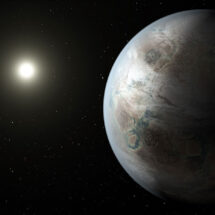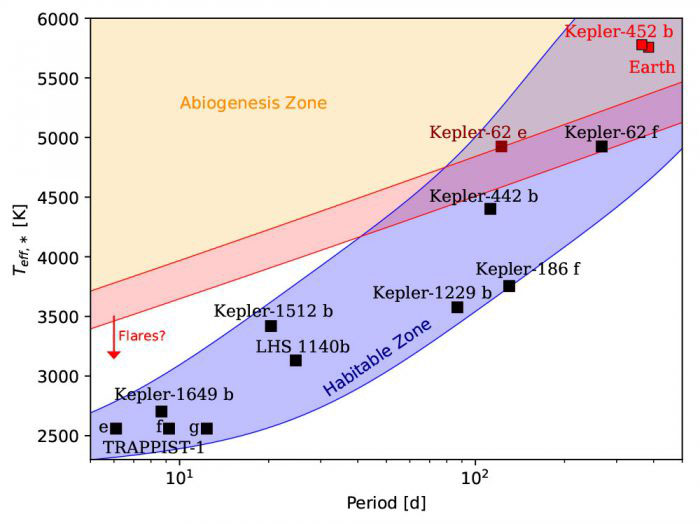
Scientists have identified planets outside our solar system where the same chemical conditions exist that may have led to life on Earth. The researchers, from John Sutherland’s group in the LMB’s PNAC Division and the University of Cambridge Cavendish Laboratory, found that the chances for life to develop on the surface of a rocky planet like Earth are connected to the type and strength of light given off by its host star.
The new study proposes that stars which give off sufficient ultraviolet (UV) light could kick-start life on their orbiting planets in the same way it likely developed on Earth, where the UV light powers a series of chemical reactions that produce the building blocks of life. The researchers identified a range of planets where the UV light from their host star is sufficient to allow these chemical reactions to take place, and that lie within the habitable range where liquid water can exist on the planet’s surface.
This new work is the result of an ongoing collaboration between John’s group and the Cavendish Laboratory, and builds on John’s earlier work on the chemical origin of life on Earth. In 2015, John proposed that cyanide, although a deadly poison, was in fact a key ingredient in the primordial soup from which all life on Earth originated. John’s group recreated the proposed chemical reactions under UV lamps and generated the precursors to lipids, amino acids and nucleotides, all of which are essential components of living cells.
Paul Rimmer, an astronomy postdoc with a joint affiliation in the Cavendish Laboratory and the LMB, came across John’s work and realised that measuring the light used during the earlier laboratory experiments could help identify planets where similar chemistry could take place. The two groups performed a series of laboratory experiments to measure how quickly the building blocks of life can be formed from hydrogen cyanide and hydrogen sulphite ions in water when exposed to UV light. They then performed the same experiment in the absence of light, but only an inert compound which could not be used to form the building blocks of life was produced.

By plotting the amount of UV light available to planets in orbit around different stars, the researchers found that stars around the same temperature as our sun emitted enough light for the building blocks of life to have formed on the surfaces of their planets. Cool stars, on the other hand, do not produce enough light for these building blocks to be formed, except if they have frequent powerful solar flares to jolt the chemistry forward step by step. Planets that receive enough light to activate the chemistry and could have liquid water on their surfaces reside in what the researchers have called the abiogenesis zone.
Among the known exoplanets that reside in the abiogenesis zone are several planets detected by the Kepler telescope, although these planets are all too far away to probe with current technology. Next-generation telescopes, such as NASA’s TESS and James Webb Telescopes, will hopefully be able to identify and potentially characterise many more planets that lie within the abiogenesis zone. It is of course possible that if there is life on other planets, it has or will develop in a totally different way than it did on Earth.
The work was funded by the MRC, the Kavli Foundation and the Simons Foundation.
Further references:
Paper in Science Advances
John’s group page
Cavendish Astrophysics – Exoplanets group
Previous Insight on Research article: Common origins of RNA, proteins and lipids on earth
University of Cambridge news release